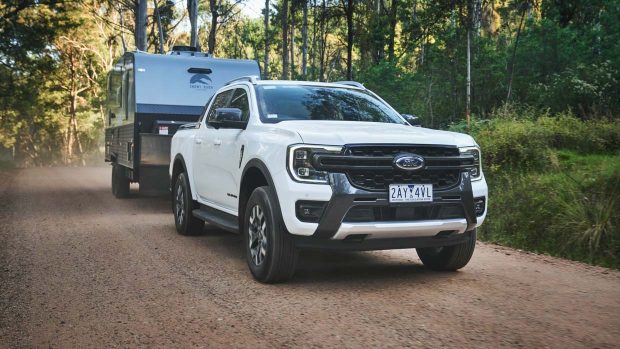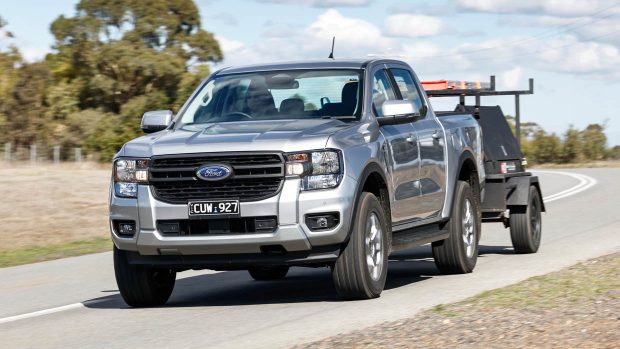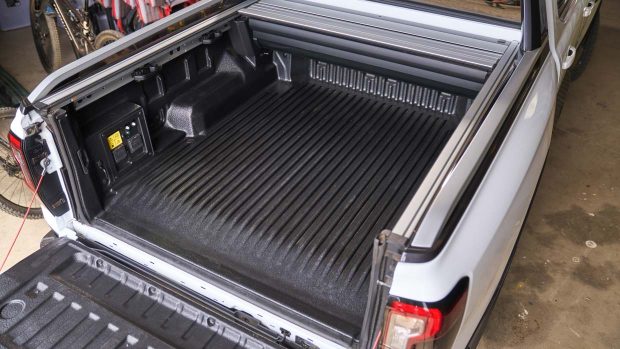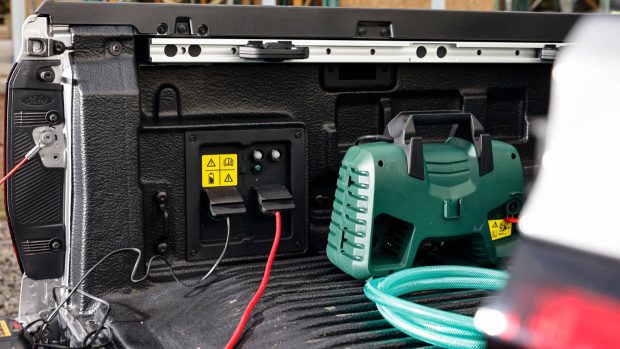-
Car Reviews
- Car News
-
Car Comparisons
Latest comparisons
- Chasing Deals
Customers want uncompromised towing and payload ratings, according to Ford – which is where Ranger PHEV tops its Chinese hybrid ute rivals
Ford’s most senior global product executive has declared the decision to prioritise towing and payload specs for the Ranger PHEV to be the correct one, with the Detroit-based Jim Baumbick telling Chasing Cars that outright electric range and system power are lower in the priority order.
Speaking with Chasing Cars at the European market launch of the Ranger PHEV, Baumbick backed the Blue Oval’s strategy—even in the face of the BYD Shark 6 and GWM Cannon Alpha PHEV outpunching the considerably pricier hybrid-powered Ranger on some, but not all, specifications.
“We have always tried to develop the best tool for the job,” Baumbick said. “When you talk to (Ranger) customers they want payload and towing (capacity) as first and second priorities by all means.
“Certainly, EV range matters in context—but if you add (a larger) battery, you are working counter to the payload and towing. So it’s around the right balance and making sure that, for (Ranger) customers and what they are doing—that they are capable of doing that.”
The Ranger PHEV has followed the 321kW/650Nm BYD Shark 6 plug-in and the size-up 300kW/750Nm GWM Cannon Alpha PHEV to market in Australia, and while the Ford wears the familiar Blue Oval, its new-world competition have it bested on some, but not all, stats.
Price is one area where the Ford will have its work cut out to convince tradies to try the Ranger PHEV. At $71,990-$86,990 before on-road costs, it’s considerably dearer than the Shark 6 ($57,900+ORCs) and Cannon Alpha PHEV ($59,990-$66,990+ORCs).
As with the GWM, Ford retained the diesel Ranger’s 3500kg braked towing capacity for the petrol-electric powertrain – besting the BYD’s 2500kg limit.
Meanwhile, the Ranger PHEV’s payload (808kg-973kg depending on grade) bests both the GWM (685kg) and the BYD (790kg).
More than 5000 customer interviews helped Ford understand buyer priorities for the first electrified version of the Ranger, with towing coming out on top. But even that advantage could be short-lived, with BYD investigating upgrades to the Shark 6’s hauling and payload.
Peak hybrid power is well down in the Ford—its 2.3-litre turbo petrol ‘four makes 138kW/411Nm, supplemented by a 75kW electric motor mounted in its ten-speed automatic transmission. Combined power is a modest 207kW, though combined torque is stout at 697Nm.
“For us, it was around optimising the (engine) for performance, towing, and capability. Our target was diesel or better,” said Baumbick about the 2.3-litre’s power output—before commenting about his satisfaction with the level of performance from the Ranger PHEV.
Also glaring to early adopters has been Ford’s decision to use a much smaller battery than either Chinese rival, with the Ranger PHEV’s tray-underslung 11.8kWh usable pack less than half the size of the Shark’s 29.5kWh unit or the Cannon Alpha PHEV’s 37.1kWh pack.
That decision sees the Ford’s 43km WLTP electric range rating pale in comparison to the 80km and 115km boasted by the BYD and GWM utes respectively, even if the Ranger’s circa-800km total driving range (when combined with a full 70-litre petrol tank) fares comparably.
All of those decisions has had the effect of making the Ranger PHEV relatively light at 2527-2692kg depending on variant—and as a result the Ford is more fuel efficient, both on electric juice and petrol when the battery is exhausted.
Product boss Baumbick revealed that Ford investigated fitting a larger battery to the Ranger PHEV—but in its view, the limitations of current technology would have meant increasing kerb weight further, potentially limiting payload. The spare wheel may not have fit, either.
“You could increase the size (of the battery), but then you have to increase all the other parts to carry the weight—so we think it is the right balance for the first application,” Baumbick said.
Still, a larger battery for the Ranger PHEV remains a possibility in the coming years as Ford works to offer a range of different Ranger powertrains–with different levels of electrification—to Australian customers.
“I can’t get into future product plans, but we see electrification as a broad range over time … you’re going to see, over time, everything from dedicated EVs to full hybrids. You can almost map the application of that, to the job the (vehicle) has to do.”
Baumbick described the Ranger PHEV’s standard fitment of 6.9kW of available AC power to operate power tools or appliances on worksites to be a “superpower” of the Ford vehicle and said the battery size was “the right size” to enable the Pro Power Onboard functionality.
BYD offers a slightly lower 6.6kW of vehicle-to-load (V2L) power output in the Shark 6 while the GWM Cannon Alpha PHEV’s V2L capability is 6.0kW.
Latest news
About Chasing cars
Chasing Cars reviews are 100% independent.
Because we are powered by Budget Direct Insurance, we don’t receive advertising or sales revenue from car manufacturers.
We’re truly independent – giving you Australia’s best car reviews.




